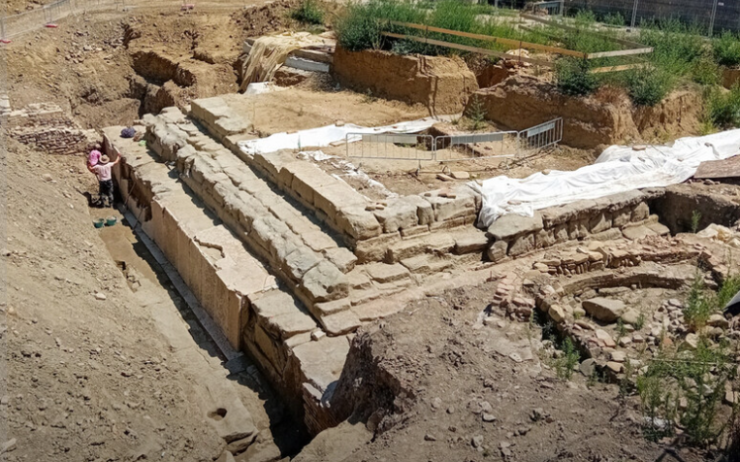In Sarsina, Italy, the birthplace of the famous playwright Plautus, a perfectly preserved triple a roman temple with adjacent early medieval buildings has been unearthed.
A recently unearthed perfectly preserved tripartite temple with adjacent early medieval structures dates back to the Roman period, together with adjacent early medieval buildings, in Sarsina (Forlì-Cesena), Italy, the birthplace of the famous playwright Plautus. The structure will be presented during the planned European Heritage Days.
Titus Maccius Plautus (ca. 254 BC – 184 BC) was an ancient Roman, famous comedian of the Old Latin period. He was one of the first and most prolific of comedic writers. Influenced by the “New Comedy” style of Ancient Greece, he created a comedy similar to Greek comedy in Rome. He influenced many classicist artists who came after him.
He was born into a middle class family in his own city. Not quite slaves, but not quite citizens either. (The cities that Rome invaded also became citizens. Some other cities were included in Roman territory, but their inhabitants could not become citizens).
Culture Minister Gennaro Sangiuliano said: “This find is an important archaeological treasure that can offer valuable information about the history and evolution of a specific geographical area. It can reveal the rich history of settlement, cultural changes in society over the centuries. This is an important contribution to our understanding of the past and could have important implications for historical and archaeological research, which we support extraordinarily throughout Italy.”
According to Ansa it, the work carried out by the Soprintendenza Archeologia, Belle Arti e Paesaggio (Abap) in the provinces of Ravenna, Forlì-Cesena and Rimini has made it possible to identify the remains of a large quadrangular structure that could be connected to a cult building.
The structure is Roman and first dated to the 1st century. Structural evidence of the same age as the sandstone pavement of the forum, which was left exposed in the nearby public archaeological area, has also been unearthed.
